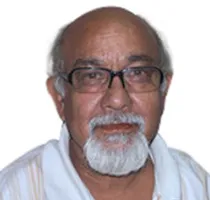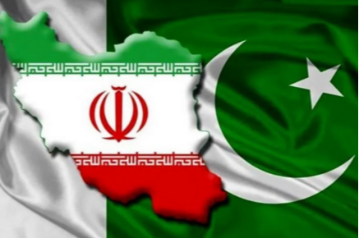
Less than two years to go for the next general elections, the ruling Bharatiya Janata Party (BJP) sounds confident of returning to power by a bigger margins than in 2014.
BJP chief Amit Shah, backed by a prominent media group conducted poll survey, said that the party riding the popularity wave of its supreme leader Prime Minister Narendra Modi is aiming to win 350 and plus Lok Sabha seats the next general election. He has even identified 150 seats where the BJP has never won in the past and is going to focus on these seats to make up for the losses in states and constituency that may be experiencing anti-incumbency.
If general elections were held today, in accordance to the media houses' mood of the nation national poll, BJP is going to bag 349 seats as there is not only no alternative (TINA) to Modi but there is Modi only (TIMA). Modi is more popular than former Prime Ministers Indira Gandhi, Jawaharlal Nehru and even Atal Bihar Vajpayee.
Claims and wishful thinking notwithstanding, is the target of 350 plus seats in 2019 or earlier if the elections were preponed realistic or a mere loud boast like the one that was made by the BJP in 2004 when India was shining under the then Prime Minister Atal Bihari Vajpayee.
While in the background of a disarrayed and fragmented opposition, the BJP’s target seems realistic but a close check of political situation prevailing on the ground does not support the ruling party’s claim.
While poll survey says that demonetization and surgical strikes have boosted Modi’s popularity but all economic indicators like the GDP growth rate are presenting a dismal picture.
Manufacturing is down, industrial performance is weak, production in core sectors is negative and other indicators are not in positive zones. Promises of jobs and reducing unemployment along with improvement in living standards of the aspiring youth remain unfulfilled. The latest Economic survey has predicted a GDP growth of 6.75% for 2017-18, which means a growth rate of 4.75% in real terms compared to the UPA government’s GDP growth rates. The Modi government had introduced new mode of calculation in 2015 that stepped up growth figures by two percent. Only positive is agriculture production but there is serious farm distress with farmers facing huge problems.
Though official rate of inflation is down yet popular mood on the ground is not ready to accept such loud claims. In short, the BJP is not going to enjoy a decisive electoral advantage on the account of its economic record.
In absence of a credible show of improvement in lives of young and old, the BJP is going to focus on emotive issues and enough indications are already available. Talk of construction of a Ram temple in Ayodhya and scrapping of Article 370 along with removal of Article 35 (A) is getting louder, Incidents of mob lynching of Dalits and Muslims are increasing even though the Prime Minister condemns them. Because the BJP ruled states refuse to pay heed to such condemnations, Modi’s words become meaningless and carry no conviction.
That is why promise of a building a ‘New India’ by 2022 is under a question mark and is taken not with a pinch of salt but with a bagful of salt since ‘Acche Din’ have failed to arrive.
Fear, apprehension and a sense of unease is increasing among weaker sections particularly among Dalits and Muslims that may not find expression in opinion polls but a possibility of these sections giving an electoral shock to the BJP in coming electoral battles cannot entirely be ruled out. Silent majorities often assert once are pushed into a corner.
Since dissent, debate and other view in being frowned upon by the ruling party and is termed as anti-national, a feeling is increasingly growing among even those sections which had voted for Modi in 204 general elections and in subsequent state elections that it is better to unite by sinking differences than face wrath of the autocratic forces.
The BJP’s electoral performance had peaked in 2014 Lok Sabha polls. It had won all seats in Goa, Gujarat, Himachal Pradesh, Rajasthan, Uttarakhand and Delhi. While in Bihar 31 with its allies out of 40, Chhattisgarh 10out of 11, in Jharkhand 12 out of 14, in Madhya Pradesh 27 out of 29, in Maharashtra 41 along with its ally Shiv Sena 41 out of 48, in UP it bagged 71 out of 80. Anti-incumbency against the BJP ruled state governments in Rajasthan, Madhya Pradesh, Chhattisgarh and in other states is growing making the task of capturing same number of seats in either assembly elections or in general elections difficult if not impossible.
Concerted efforts to unite the opposition are continuing. August 17 convention of former JD (U) chief Sharad Yadav attended by representatives of 17 parties and organizations is just one evidence of the resolve of non-BJP parties that are being denied political space by host of intimidating and threatening measures of the ruling dispensation.
In the face of growing index of opposition unity, a repeat performance on 2014 is going to be an uphill task for the Modi-Shah combine notwithstanding manipulative electoral skills and misuse of the government machinery by the ruling party.
Division of votes and multi-cornered electoral contests have favoured the BJP in recent electoral battles. The BJP went on to win 282 Lok Sabha seats with 31 percent votes but if the SP, BSP and Congress put up joint candidates against the BJP in UP, it may be impossible to win 73 seats with its allies in the biggest state.
Similarly in Bihar, an electoral alliance between the RJD, Congress and Sharad Yadav led faction of the JD (U) is going to make a repeat performance of 31 wins out of 40 seats difficult if not impossible.
The BJP is hoping to win extra seats from states like Odisha, West Bengal, Kerala, Karnataka and Tamil Nadu. Shah is also focusing on north -eastern states to make up for the loss in Hindi states.
Very fact that the Modi-Shah combine have decided to contest MP, Rajasthan and Chhattisgarh election next year under the present chief ministers is a clear acceptance of the prevailing corrupt in these states. At the same time, it is an admission of weakness.
Shah said in Madhya Pradesh that the BJP is going to rule the country for the next 50 years. Such claims, may energize cadres but whether it would also results in more votes is highly doubtful.
The views expressed above belong to the author(s). ORF research and analyses now available on Telegram! Click here to access our curated content — blogs, longforms and interviews.



 Less than two years to go for the next general elections, the ruling Bharatiya Janata Party (BJP) sounds confident of returning to power by a bigger margins than in 2014.
BJP chief Amit Shah, backed by a prominent media group conducted poll survey, said that the party riding the popularity wave of its supreme leader Prime Minister Narendra Modi is aiming to win 350 and plus Lok Sabha seats the next general election. He has even identified 150 seats where the BJP has never won in the past and is going to focus on these seats to make up for the losses in states and constituency that may be experiencing anti-incumbency.
If general elections were held today, in accordance to the media houses' mood of the nation national poll, BJP is going to bag 349 seats as there is not only no alternative (TINA) to Modi but there is Modi only (TIMA). Modi is more popular than former Prime Ministers Indira Gandhi, Jawaharlal Nehru and even Atal Bihar Vajpayee.
Claims and wishful thinking notwithstanding, is the target of 350 plus seats in 2019 or earlier if the elections were preponed realistic or a mere loud boast like the one that was made by the BJP in 2004 when India was shining under the then Prime Minister Atal Bihari Vajpayee.
Less than two years to go for the next general elections, the ruling Bharatiya Janata Party (BJP) sounds confident of returning to power by a bigger margins than in 2014.
BJP chief Amit Shah, backed by a prominent media group conducted poll survey, said that the party riding the popularity wave of its supreme leader Prime Minister Narendra Modi is aiming to win 350 and plus Lok Sabha seats the next general election. He has even identified 150 seats where the BJP has never won in the past and is going to focus on these seats to make up for the losses in states and constituency that may be experiencing anti-incumbency.
If general elections were held today, in accordance to the media houses' mood of the nation national poll, BJP is going to bag 349 seats as there is not only no alternative (TINA) to Modi but there is Modi only (TIMA). Modi is more popular than former Prime Ministers Indira Gandhi, Jawaharlal Nehru and even Atal Bihar Vajpayee.
Claims and wishful thinking notwithstanding, is the target of 350 plus seats in 2019 or earlier if the elections were preponed realistic or a mere loud boast like the one that was made by the BJP in 2004 when India was shining under the then Prime Minister Atal Bihari Vajpayee.
 PREV
PREV


